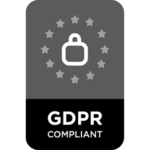At ProWorkflow, we strongly believe that reporting doesn’t need to be complicated and time consuming, but also that it needs to work for you personally. After a few pointers to get you started, you will find the new reporting extremely easy and useful.
We’ve created a video to show you how you would go about creating the new reports that work for your company. We talk you through some popular examples (like the Time Summary Report) and provide you with some handy tips and tricks. We highly recommend you watch it.
Our new Reports are quite different to the old ones, and that’s a good thing. Imagine being able to provide Reports exactly the way they work for your company. Real world Reports for real world businesses. No superfluous information, just exactly all the information you need, available at a click of a button.
It’s common knowledge that companies often require the same Reports to answer the same questions every week, every month, every year. Once your new ProWorkflow Reports are customized to your needs, things become a breeze. Your individualized Reports are only a couple of clicks away at any given moment. The convenience of having the highly customized Reports for your company makes the initial set-up process absolutely worthwhile.
In the meantime, here are our ultimate pieces of wisdom to get you started with our new Reports
1. If you had a favorite report in the old system, it could be called something else now.
That’s because the large range of Standard Reports available all now have standardized names.
ProWorkflow Tip: The popular ‘Time Summary Report’ is now called ‘Time Spent by Date Range Report’
Here are some useful pointers for finding your way around the ‘standardized names’:
- If you see the words “Overview” or “by Date Range”, then the Report will likely be a numbers and figures Report.
- If the name contains “Summary of” or “Detailed” then the Report is probably an information Report, containing rows with lots of fields, like dates, names, titles and statuses.
But it’s good to keep in mind that these Standardized Reports are only starting points. The idea is to change a Standard Report to suit your company and then save a copy of the Report that you find useful. Call your individualized Report the name that summarizes best how it’s used for your business. It will make it easy to find next time. Once you’ve done it, you don’t need to create it again.
2. The Standard Reports are only a starting point.
It’s important to understand that you can’t do anything wrong when creating new individualized Reports. Your individual Report will be saved with its new name on the top of the Reports page, but the “Standard Reports” list will keep the original standardized name and remain unchanged. If you made a mistake somewhere along the way or changed your mind on the best way to create an individual report, you can always refer back to the standard Report and start from scratch.
Some useful steps for creating New Individual Reports:
- Start with decluttering the Standard Report first to help you focus on the information that is important. Remove any fields that are not relevant in your Report.
- After we’ve removed a few unnecessary things, it’s a good time to think about which fields we need to add to make this report work for you. Just drag and drop the fields you require into the report. Did you know that you can move the location of the fields in your Reports around?
- You can do some further customization and change the filters.
- When you’re happy with the result of your changes, it’s time to save this report with the name of your choice.
- Finally, you can share the customized report with other ProWorkflow users in your company so this initial work only needs to happen once!
Once the report is saved, you can see it is at the top of the main Reports page. From now on, a single click sends you straight back to your individual Report.
3. The best way to learn this new way of reporting is to explore.
A name (standardized or not) is only so good at describing what data the Report contains, so the best way to check is just to run the Report and see what it shows. For most Reports, a single click takes you in so you can see the groupings and the potential for an overview or a more detailed version of the same data.
It is worth spending some time clicking on each of the main Report types to see what data they return.
Click into the fields and filter tabs for each Report too. If you’ve watched the video, you’ve seen that there is a lot of power here to really customize and focus the Report for each business case.
If it looks like it might be helpful, save a copy (and name it something useful for you and add a description if needed). You can always delete it later. As we’ve said before, you can’t do anything wrong.
We have written a few previous blogs on the very basics of how to use the new Reports that may be useful to you. You can find them here.
And finally, if you get stuck, please don’t hesitate to give the support team a call or send a message. We’re always happy to help.

